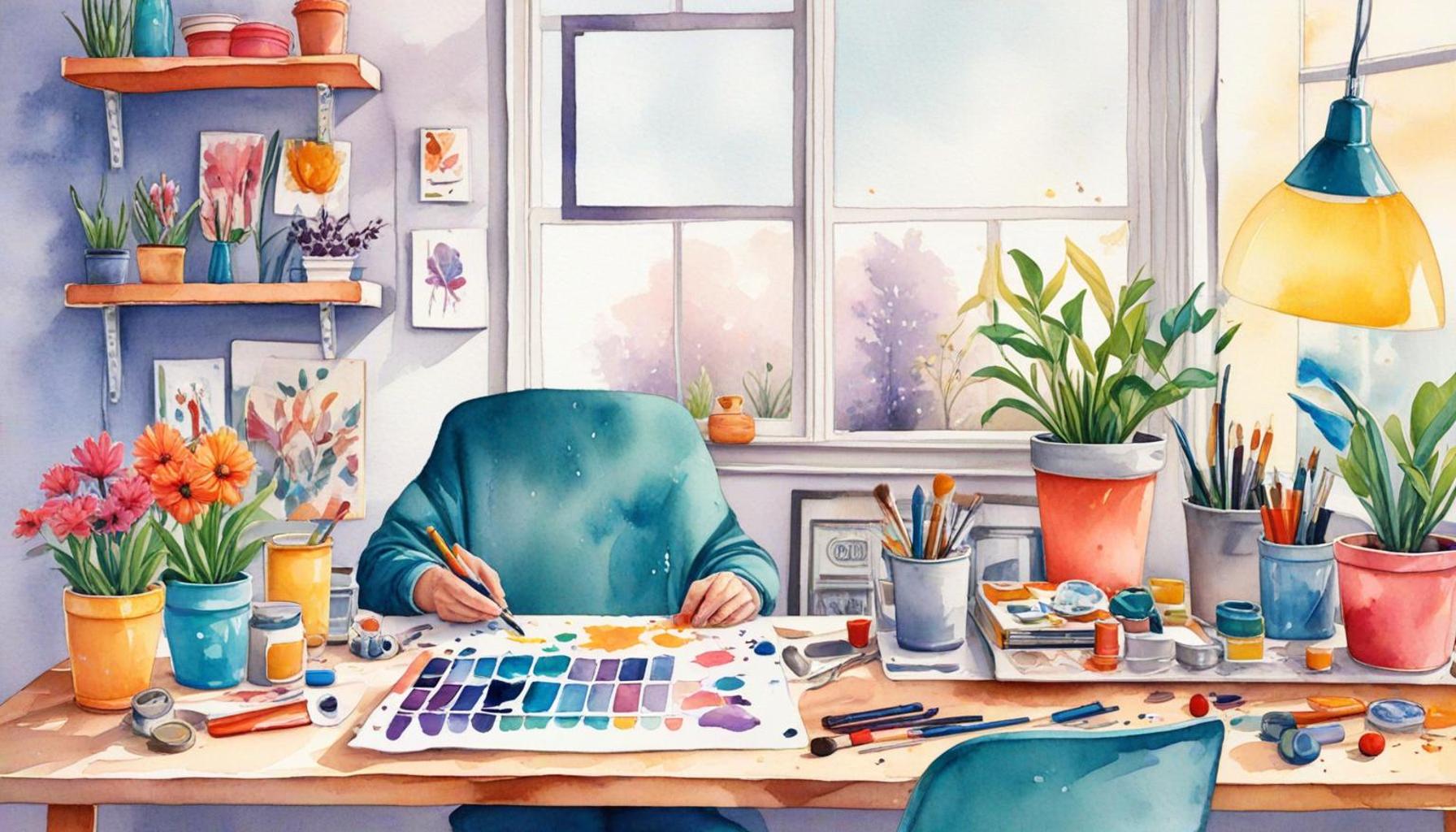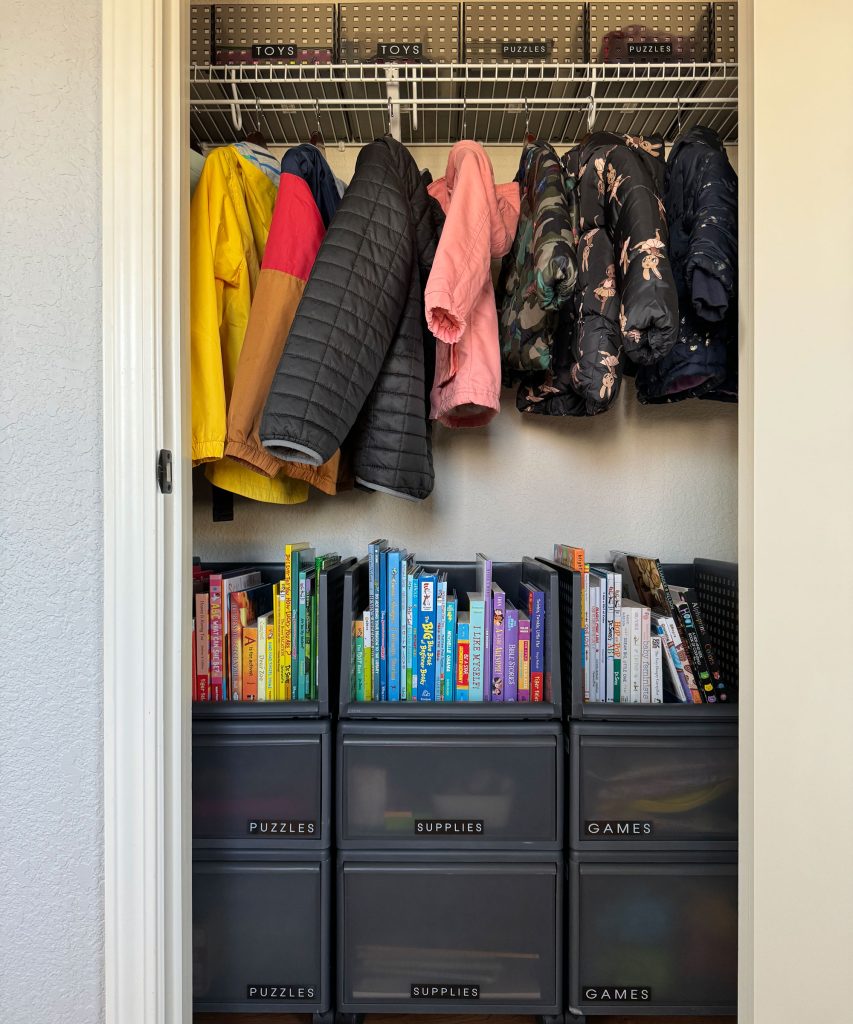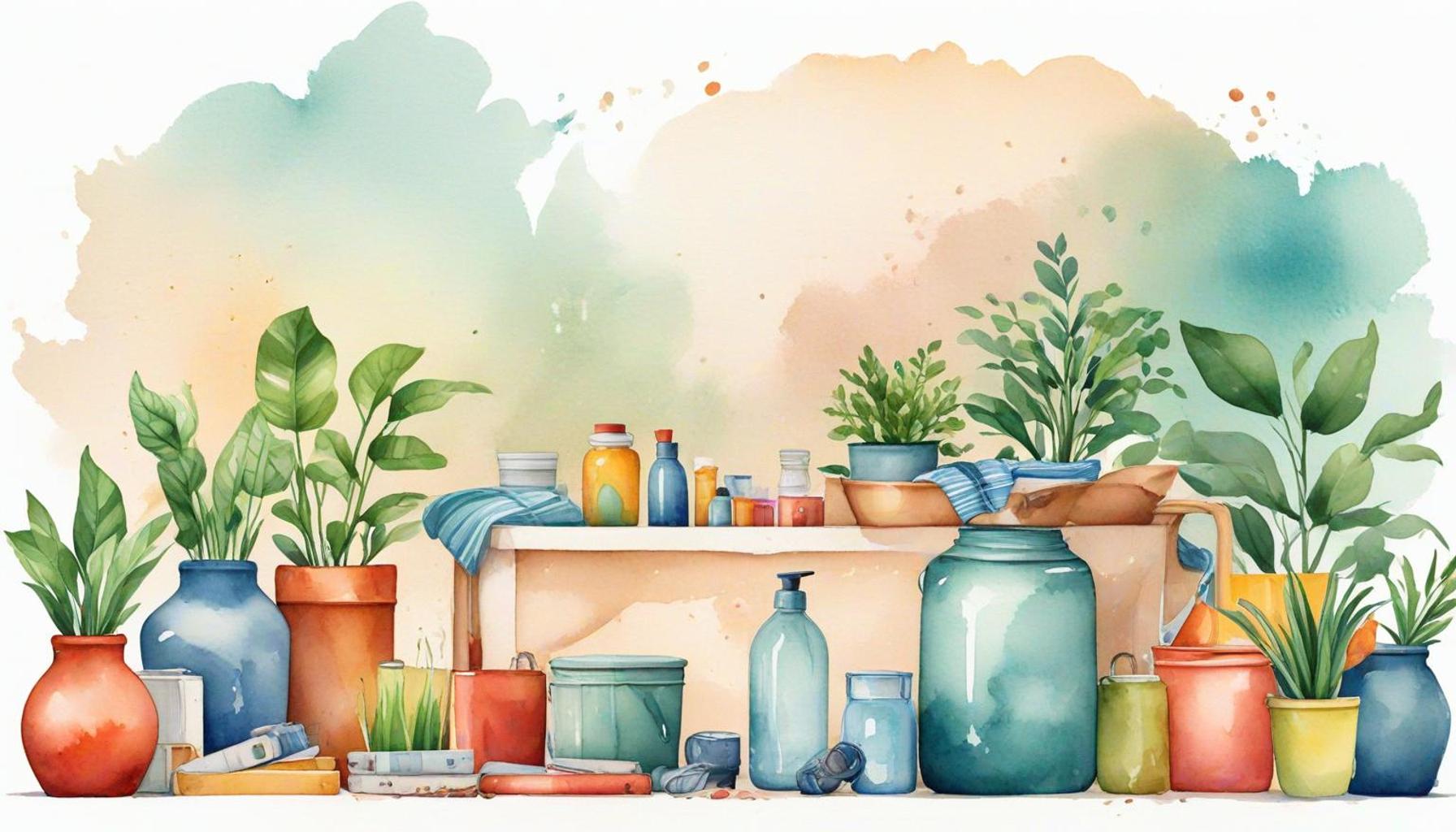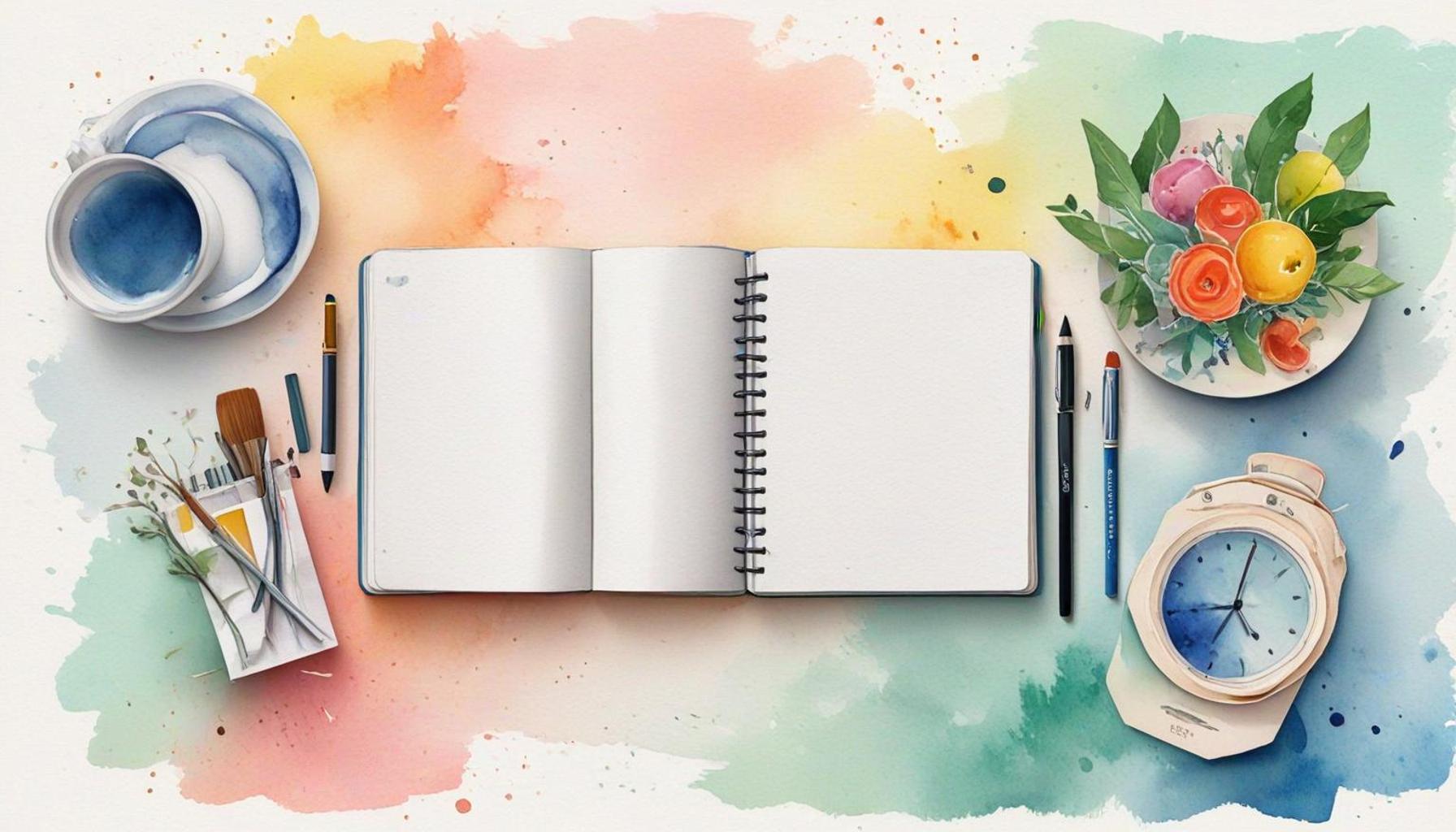The Reduction of Clutter in DIY Projects: Creating Creative Spaces Without Accumulating Materials

Embracing Minimalism in DIY Projects
In a world overflowing with products and materials, DIY projects offer a refreshing escape into creativity. However, the thrill of creating often leads to an unintended consequence: clutter. Recognizing the importance of reducing this clutter is essential for crafting not only functional items but also inspiring spaces. Too often, enthusiastic creators find themselves surrounded by a mishmash of tools and supplies that stifle the very inspiration they seek.
So, how can you maintain your artistic flair while minimizing materials? Here are some effective strategies that can transform your DIY experience:
- Repurpose Items: Take a moment to look around your home for items that may be collecting dust. For instance, an old wooden ladder can be transformed into a rustic bookshelf, or glass jars can become chic planters for your kitchen herbs. The idea is to breathe new life into forgotten objects rather than opting for brand new materials. This not only reduces waste but also adds a personal touch to your projects.
- Prioritize Essential Tools: A well-thought-out toolkit can be the backbone of any DIY venture. Instead of amassing a range of specialty tools, consider investing in versatile options, like a multi-tool or a quality set of measuring instruments. This not only cuts down on clutter but also enhances your ability to undertake a range of projects efficiently.
- Plan Before You Create: The benefits of sketching out your ideas and gathering only the materials you need cannot be overstated. An organized approach helps avoid impulse purchases of supplies that may never be used. Create a checklist or even a mood board to guide your process and keep your focus sharp.
The journey to a clutter-free DIY experience is not merely about space; it’s about fostering an environment that encourages innovation. Engaging with this minimalist concept can lead to more than just tidy surroundings—it creates creative spaces that enhance productivity and spark inspiration. An organized workshop or crafting corner can make all the difference in the quality and enjoyment of your projects.
Moreover, learning how to manage materials effectively cultivates a mindset that treasures quality over quantity. This newfound awareness leads you to seek out high-quality, sustainable materials that not only enhance durability but also reflect an eco-conscious ethos. By embracing these practices, you unlock a new level of creativity that harmonizes seamlessly with a minimalist approach.
Your next DIY endeavor could be a stunning creation that reflects both your unique style and commitment to sustainable practices. Whether you’re fashioning a personalized decor piece or building functional furniture, minimalism paves the way for creativity that is both innovative and responsible. So, gather your materials with intention, let go of excess, and watch as your creative spirit flourishes in a clean, organized environment.

LEARN MORE: Click here to simplify your finances
Streamlining Your Material Selection
To cultivate a productive and inspiring DIY workspace, the first step is to streamline your material selection. Many DIY enthusiasts fall into the trap of accumulating supplies, believing that having an extensive array of materials will spark creativity. However, a cluttered space can often stifle innovation and make projects feel overwhelming. To counter this, adopting a thoughtful approach toward your material needs is essential. Before embarking on a new crafting adventure, take a moment to inventory what you already possess. You might be surprised by the forgotten gems hidden at the back of your closet or garage, which could ignite new ideas and set you on the path to completion.
Implementing effective strategies can significantly enhance your material selection process. Here are several recommendations to consider:
- Conduct a Thorough Inventory: Begin by compiling an exhaustive list of the materials already in your possession. This inventory may include items such as paints, fabrics, wood scraps, and various tools. Organizing this list—perhaps even including photographs—will allow you to visualize your available resources. Keeping such an inventory not only prevents duplicate purchases but can also inspire spontaneous projects based on what you already own.
- Set a Budget for New Materials: When new supplies are necessary, establishing a budget is crucial. Set limits on how much you’re willing to spend on additional materials. This financial restraint can help narrow your focus to obtaining essential items only, thus mitigating the tendency to stockpile unnecessary supplies.
- Opt for Borrowing or Sharing: Instead of buying seldom-used equipment, consider borrowing tools or materials from friends or local community groups. Not only does this practice strengthen community bonds, but it also significantly reduces the amount of unused items lying around your home. For instance, many neighborhoods have tool libraries where residents can lend and share equipment for various projects, fostering collaboration and resourcefulness.
Moreover, it’s vital to consider sustainability when selecting materials. Opting for eco-friendly choices or items made from recycled materials can significantly lessen your ecological footprint. Many retailers, especially craft stores and home improvement chains across the United States, now boast a selection of sustainable options that maintain quality without contributing to waste. This conscious choice aligns creativity with environmental stewardship, enhancing the overall DIY experience.
Equally essential is the choice of workspace. Establishing a designated area for your projects can vastly improve organization. Whether you perch in a cozy corner of your living room, commandeer a spare bedroom, or devote your garage to creativity, having a specific zone helps contain your supplies and instills a sense of purpose. An organized workspace minimizes distractions, allowing your ideas and creativity to flow unhindered.
By implementing these strategies, you can dramatically reduce clutter in your DIY endeavors. This streamlining not only paves the way for a clearer and more enjoyable creative process but also enhances the joy of crafting itself. Remember, the true satisfaction comes not just from the finished product but from the fulfilling journey of creating in an inspiring and well-organized space. Engage with your materials, and let the magic of creativity unfold!
In exploring the theme of “The Reduction of Clutter in DIY Projects: Creating Creative Spaces Without Accumulating Materials,” it is essential to consider the practical strategies that can be implemented to foster creativity while minimizing waste. Effective organization can significantly enhance the aesthetic and functionality of any workspace, making it conducive to both artistic expression and productivity.One of the most impactful approaches is the principle of minimalism. By deliberately selecting a limited number of materials and tools, DIY enthusiasts can focus on quality rather than quantity. This not only reduces clutter but also encourages thoughtful project planning. For instance, using repurposed items or natural materials not only decreases the likelihood of excess buildup but also adds a unique character to projects. Another effective strategy is the implementation of visual storage solutions. Clear bins and labeled containers allow individuals to see at a glance what materials they have on hand, thus eliminating the temptation to purchase duplicates or unnecessary supplies. Moreover, hanging organizers or pegboards can revolutionize a workspace, keeping essential tools accessible and neatly arranged. This not only enhances efficiency but also promotes a more peaceful and motivating environment.In addition, practicing mindful purchasing is essential. Before acquiring new materials, considering whether they are truly necessary or will merely contribute to accumulated clutter is critical. Setting specific project goals can also help maintain focus and ensure that the chosen materials are relevant and functional.By embracing these practices, DIY enthusiasts can transform their creative spaces into inspiring sanctuaries, free from the chaos of clutter. As individuals become more intentional about their crafting habits, they will inevitably discover not just increased productivity but also a deeper satisfaction in the creative process itself. This ongoing journey of exploration into the intersection of creativity and organization will resonate with anyone looking to enhance their DIY experience while enjoying the art of minimalism. To illustrate the advantages of this transformative journey, the following table showcases key benefits and strategies associated with reducing clutter in DIY projects:
| Category | Description |
|---|---|
| Creativity Enhancer | A decluttered workspace promotes focus, enabling higher creative output. |
| Stress Reduction | A clean space leads to a more calming environment, reducing anxiety linked to clutter. |
| Efficiency | Easier access to tools and materials accelerates project execution and planning. |
By adopting these insights and strategies, DIY enthusiasts can cultivate spaces that inspire creativity without the burden of excessive materials, ultimately leading to a more fulfilling crafting journey.
DIVE DEEPER: Click here for more insights
Maximizing Creativity with Minimalism
As you streamline your materials, the next step in reducing clutter in your DIY projects is to embrace minimalism as a guiding principle. Minimalism isn’t merely a trend; it’s a lifestyle choice that can profoundly affect your creative processes. By simplifying your workspace and focusing on the essentials, you allow your creativity to take center stage, leading to innovative project outcomes.
One effective technique is to implement the one-in, one-out rule. This philosophy encourages you to consider each new item you bring into your space carefully. For every new material or tool you decide to purchase, commit to removing a similar item from your collection. This practice not only prevents the accumulation of unnecessary supplies but also instills a mindful approach to your material needs. By questioning the value and utility of each item, you inevitably cultivate a more focused and liberated creative environment.
In addition to the one-in, one-out rule, consider exploring multi-purpose materials. Look for items that can serve multiple roles in various projects, thus maximizing their use. For instance, a basic wooden dowel can be transformed into a picture frame stand, a curtain rod, or even a plant support. By investing in versatile supplies, you reduce redundancy and keep your workspace uncluttered. Many craft enthusiasts throughout the U.S. have discovered the joy of reimagining everyday objects, like turning glass jars into chic storage solutions or repurposing old furniture in innovative ways.
Smart storage solutions also play a pivotal role in reducing clutter. Using clear storage bins or labeled containers helps to maintain an organized workspace where items are easily accessible and visible. You can even explore vertical storage options, such as pegboards or wall-mounted shelves, to optimize space while showcasing your tools and materials artistically. This method not only minimizes clutter but transforms your workspace into a functional gallery of your creativity.
Additionally, schedule regular decluttering sessions to keep your DIY space in check. Allocate some time every month to review your materials, tools, and ongoing projects. This proactive approach will enable you to identify items that no longer serve your projects or that you’ve outgrown. By making decluttering a part of your routine, you foster a dynamic creative space that is perpetually conducive to production and inspiration.
Exploring digital alternatives can also significantly reduce physical clutter. For instance, rather than stocking an extensive library of craft books, consider utilizing online resources such as instructional videos, community forums, or apps designed for DIY enthusiasts. Websites like Pinterest and YouTube offer endless inspiration and tutorials without the encumbrance of physical materials. Digital platforms allow for a streamlined approach to project planning, where you can save ideas and organize your materials virtually, leading to less wasted time and space.
Finally, engage with the broader DIY community to share resources and ideas. Platforms such as Meetup.com or local Facebook groups often facilitate swapping events, where crafters can exchange supplies or even offer unused materials to new creators. These exchanges nurture local connections and expand your creative horizons while helping manage your inventory.
By integrating minimalism into your DIY practices, you can create a creative haven that fosters imagination and productivity without the chaos of clutter. Every decision from material selection to workspace organization plays a crucial role in allowing your creative spirit to flourish in an efficient and inspiring environment.
DIVE DEEPER: Click here to uncover the significance of intention in minimalist living
Embracing Creativity Through Clutter Reduction
In the world of DIY, the mantra of less is more resounds louder than ever. By embracing minimalism as a core principle, creators can unlock the door to a clutter-free environment that fosters both innovation and efficiency. As we’ve explored, techniques like the one-in, one-out rule and the use of multi-purpose materials pave the way for mindful consumption. This conscious approach helps reduce the pressure of surplus supplies, enabling you to focus purely on bringing your creative visions to life.
Additionally, organized and efficient storage solutions not only clear physical space but also create a mental environment conducive to creativity. Regular decluttering sessions can ensure that your workspace remains a sanctuary for inspiration, while digital tools can eliminate the need for excessive physical materials, adapting to the fast-paced nature of modern crafting. By using platforms like Pinterest and YouTube, DIY enthusiasts can access a treasure trove of ideas without the clutter of traditional resources.
Engaging with the DIY community to exchange materials and ideas can further reduce your clutter footprint while expanding your creative repertoire. Ultimately, the key to transforming your DIY experience lies in intentionality. Each decision regarding materials and tools shapes your creative space and approach. By prioritizing a reduction in clutter, you not only enhance your artistic output but also cultivate a more sustainable, enjoyable crafting journey. Begin this exploration today and discover how the liberation from excess can amplify your creativity and passion for DIY projects.



